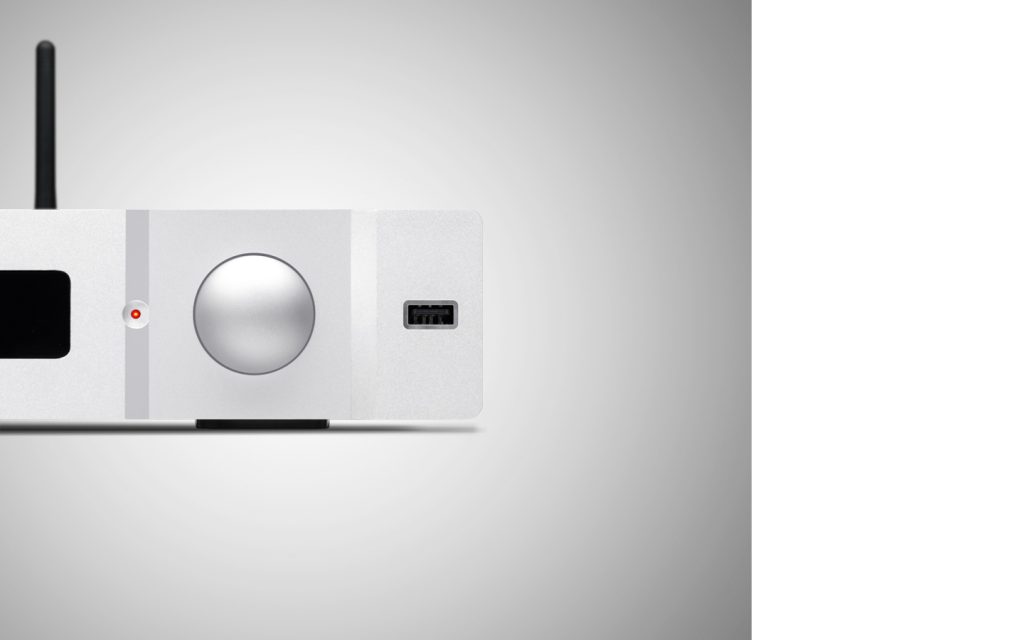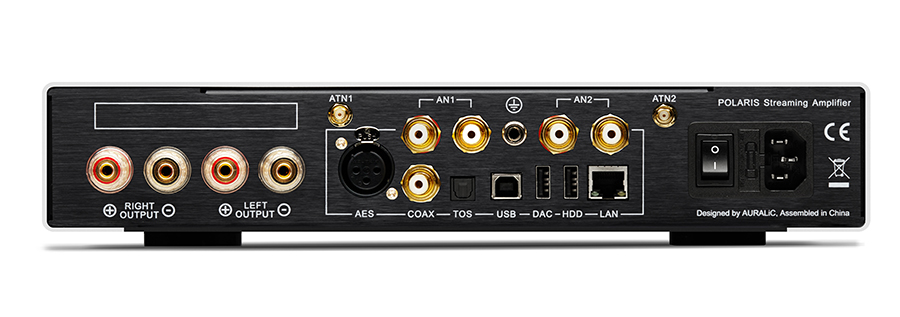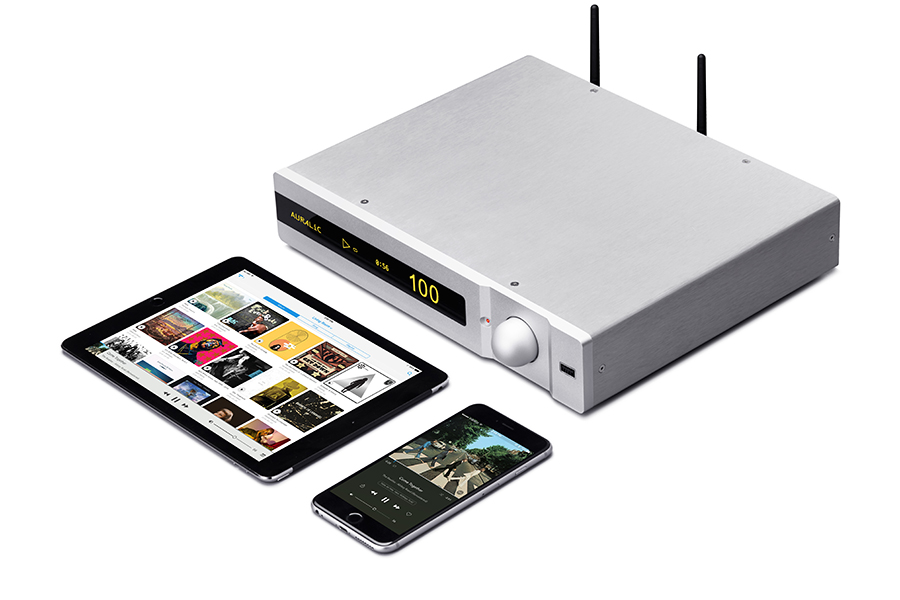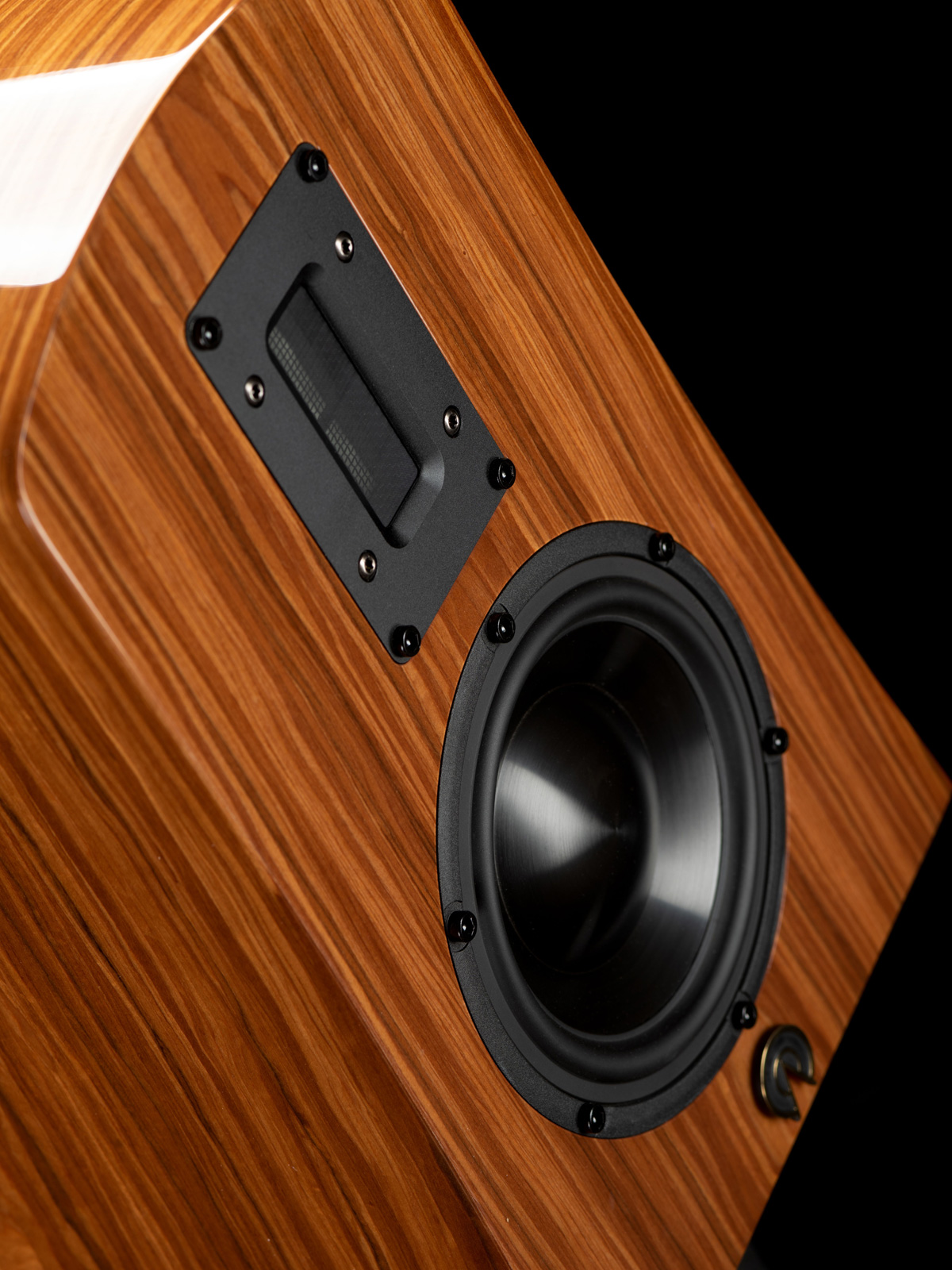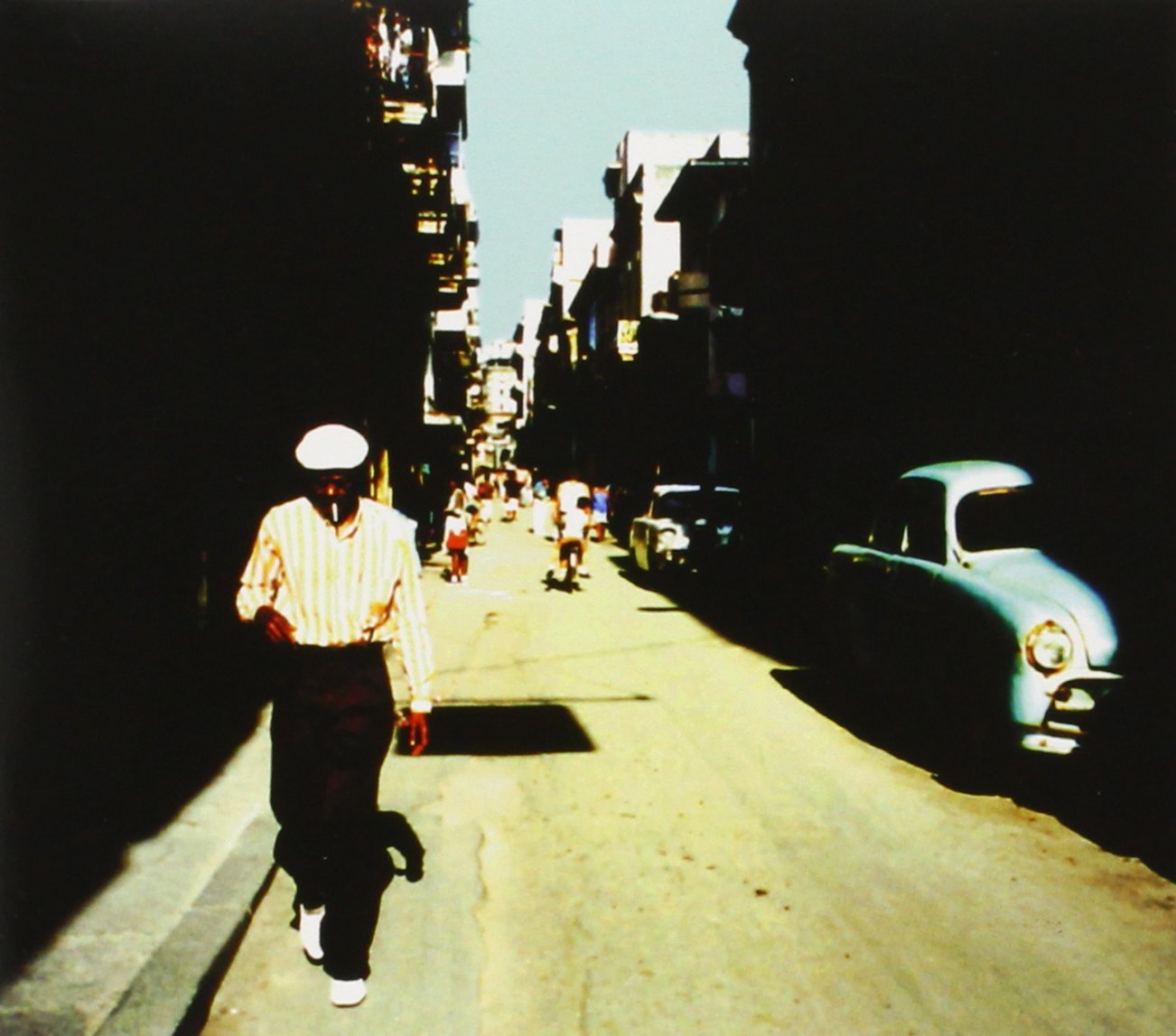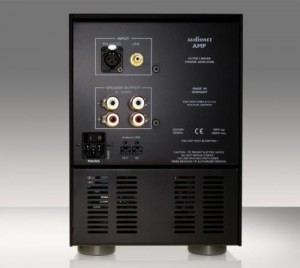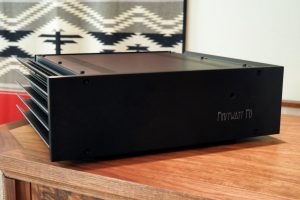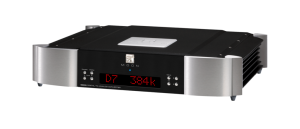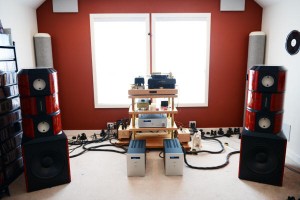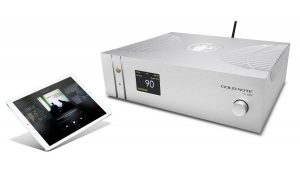These are exciting times for users of integrated amplifiers. Never before have so many features and efficient power been squeezed into a single box. Over the course of thirty years, I have been privileged to own or listen to several exemplary models. In time, I believe that the AURALiC POLARIS will be considered by many for inclusion on the short list of finest in the genre.
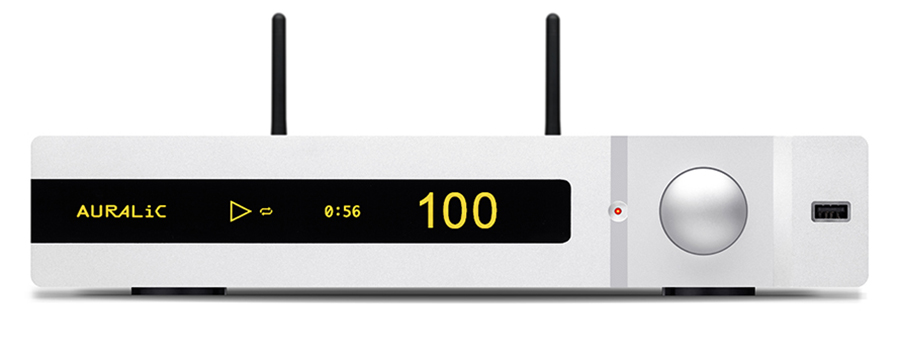
The POLARIS is officially called a streaming amplifier. The densely packed ten-pound unit is visually unassuming and gives little clue to the innovative technology inside. The front presents a 1 cm aluminum faceplate with a ball shaped control knob on the right and one-inch black alphanumeric display across the center. A USB port occupies the space to the right of the control knob where usually a headphone input is located. The back features high quality five way binding posts and inputs for multiple digital and analogue sources. The POLARIS is rated at 120 watts into my 8 ohm KEF LS50 speakers and 180 watts into 4 ohm loads.
Unlike my reference Bel Canto C7R, which is essentially a DAC with 60 watts of power, input functions, and FM, the AURALiC POLARIS is more akin to a sophisticated computer. You turn the unit on and wait for it to boot up. WiFi is essential to operation as the unit performs checks and updates for optimum performance. I connected my 500 GB portable hard drive containing Apple Lossless rips of CDs and iTunes downloads to the rear USB 2.0 high-speed input. The old family PS3 was routed to the POLARIS with a short length Toslink for viewing Blu-ray movies in 2.1. My Pioneer PLX 1000 turntable was connected to analogue input 1 and my SVS SB2000 subwoofer was connected to analogue input 2 which I had previously programed as pre-amp out with the control knob. Yes, you read correctly. The POLARIS allows the user to configure analogue input 1 as moving magnet phono with 36dB of gain or line stage and analogue input 2 as line stage in or preamp out. I'll give you a moment to pick up jaw from floor.
Completing the initial set up process requires an Apple iPhone or iPad and the free AURALiC Lightning DS app (from the Apple App store). A comprehensive series of slides guides the user to set up storage device, such as my 500 GB portable hard drive, and connecting with your streaming service account like Tidal. This was easy without a glitch. The Lightning DS app allows the user to view one's digital music collection as a list by artist or album (with covers), as well as by file type, bit rate, sampling, and so on. The purchase of a POLARIS comes with a complimentary code for 3 months of Tidal HiFi.
LPs have long been my reference for musical fidelity and enjoyment. However, I would be remiss if I did not advise you about the importance of compatibility. My current favorite moving magnet cartridge is LP Gear's The Vessel A3SV with an output of 2.5 mv. Using this cartridge necessitated an aggressive volume setting in the 90 to 100 range of the POLARIS to produce moderate levels of sound. As a result, I switched back to my trusty Linn Adikt with a more robust 6.5 mv output.
I am not a follower of Lady Gaga but my wife is. One day she came home with Gaga's latest double LP Joanne. Side B ends with a very poignant acoustic song "Million Reasons". The POLARIS sounded vivid and traced every modulation of Ms. Gaga's expressive voice. I've played the song often since then and each time I'm impressed with the AURALiC's clear musical images and convincing portrayal of space.
Schubert's incidental music for the play Rosamunde, D797, contains one of my favorite classical melodies. My copy is a 1963 French pressing (Decca 592034) by the Vienna Philharmonic directed by Pierre Monteux. Entr'acte No. 3 Adantino floated delicate layers of sound. The clarinet's signature warm woodiness contrasted perfectly with oboe's narrower timbre.
The late Tito Puente's 1985 LP Mambo Diablo on Concord Picante (CJP-283) contains some essential music for Latin Jazz enthusiasts. The KEF LS50s reacted to "double the power 120 watt POLARIS" like a shot of adrenalin. AURALiC chose Hypex modules for amplification with considerable attention paid to AC mains noise reduction. The title track blazes with intensity and swing as Tito strikes the catchy melodic motif on marimba. China, pronounced "Cheena"—lovely lady with Asian eyes, is a propulsive cha-cha anchored by steady bass and raucous dance hall horns. If all I did were to listen to LPs, this would be the end of a most favorable review. However, POLARIS offers much more.
Over the years I have spent countless hours carefully curating my iTunes playlists, since playlists are how I organize music in my brain. Currently I have 28 playlists and each contains a multitude of songs or musical movements. AURALiC's Lightning DS app doesn't care about any iTunes' playlist. The app swiftly scans your storage device and displays its contents by one several categories such as year of recording, composer, artists, or album. Creating playlists would have to be done all over again on the controlling iPhone or iPad. I was not looking forward to squinting and scrolling through song titles for hours and creating playlists on my iPhone. Therefore, I played songs by random association.
One of the first tracks I listened to was Japanese jazz pianist Hiromi's arrangement for trio of Beethoven's Piano Sonata No. 8 from her 2011 album Voice. I was taken aback by how much better the music sounded through the POLARIS. Simon Phillips' drums moved noticeably farther back in the soundstage and Anthony Jackson's 6 string electric contrabass plumbed depths that vibrated loose items on the walls. The piano resonated clearly and bloomed with lasting overtones. I followed with Bach's Prelude No. 1 in C Major, BWV 846, as interpreted by the Jacques Loussier Trio from his 1999 recording The Back Book on Telarc. Once again I was stunned by the improvements over my reference. Musicians occupied very specific places on a deep wide sound space completely unrelated to the speakers in front of me.
The Gipsy Kings' 1993 album Love & Liberte contains a pair of preferred instrumentals. "Ritmo de la Noche" and "Michael" are both rumbas, of course. I've listened to these tracks countless times on my reference and enjoy the jazzy elements of the musical performance. Listening with the POLARIS was like hearing the songs from a different mix. The sound space opened up considerably and location of performers was significantly enhanced. In fact, I can state unequivocally that the AURALiC POLARIS made all my digital music files sound remarkably more transparent, refined, and musically engaging. Song after song I heard fine details and experienced a deep sound space that I was previously unaware of. This observation is a remarkable achievement as my long term reference Bel Canto C7R is an acclaimed performer.
AURALiC has designed several innovative technologies responsible for the POLARIS' impressive sound from digital files. Tesla Platform coordinates incoming data with a Quad-Core Coretex A9 processor running at 1Ghz. The platform has the ability to calculate 25k MIPS to decipher all current and future file formats. AURALiC's dual frequency Femto Master clock is designed to function exclusively with the ESS Sabre DAC chip. The result of this near obsessive dedication to the integrity of digital files and streaming sources is super quiet operation and seamless transfer of data into precise musical waveforms.
One evening I viewed the Blu-ray DVD of Arrival. The movie won the Academy Award for Best Achievement in Sound Editing and the POLARIS did not disappoint. The film features otherworldly sounds of giant octopods and their space-time craft. The low rumble of the octopod's footfalls and movements was particularly dynamic greatly enhanced credibility of their massive dimensions. The subtle dialog spoken by Amy Adams evoked true emotion and sound effects were explicitly clear.
Overall, AURALiC's performance with my Apple Lossless rips, iTunes downloads, and DVD viewing was elevated to higher level. If all I did were to listen to my digital media and watch movies, POLARIS would get my enthusiastic recommendation. However, POLARIS offers yet more.
Off all the sources I have described above, Tidal HiFi was the most amazingly impressive. Streaming certainly has come a long way from the early days of waiting in Los Angeles for a Latin Jazz internet radio station in New York to buffer and play low fidelity music. Sound literally exploded out of the speakers with Tidal HiFi. Consistently, the front wall vanished and another dimension appeared before me. I was mesmerizingly attracted to it like a moth to a nightlight.
Meet your new bass test tune, "CEE-TEE-EYE" by Marcus Miller from this 2012 recording Renaissance. The funky vamp puts Miller's low down bass in the spotlight as he slapped, pulled, and strummed the instrument with tactile dynamic force that rattled the room.
"Can't You Hear Me Knocking" from the Rolling Stones' remastered Sticky Fingers reavealed many surprises in contrasts to the version heard daily on every FM classic radio station around the world. Keith Richard's guitar amp sounded absolutely present in the room and exactly five seconds in someone remarks, "Yeah!" The final 4 minute jam session laid to waste any memory I previously held of this transcendent music. I noted similar observations for "Gimme Shelter" from the bands Let It Bleed. Bruce Hornsby's 2006 live album Intersections contains a moving rendition of "Fortunate Son/Comfortably Numb". The POLARIS projected a palpable ambiance of the live event with deep bass and extraordinary transparency.
My Latin Jazz iTunes downloads or "heart" Tidal recommendations for the month are "Sabor" from Obert Davis' 2016 Chicago Jazz Philharmonic Chamber Ensemble live recording Havana Blue and "Bachiao" by Trio da Paz & Joe Locke from their 2008 album Live at Jazzbaltica. Both tunes are well recorded and contain excellent musicianship. The Obert Davis track is lilting mambo that melds classical strings and brass in the great tradition of Afro-Cuban danzones. I suggest listening late at night with a bit of fine rum. The Trio da Paz song is high energy and features stellar stick work by drummer Duduka da Fonseca.
With so many features and superb sound, the AURALiC POLARIS may be the final evolution for integrated amplifiers at this price point. (Perhaps POLARIS 2.0 will automatically boot up and welcome you in Scarlett Johansson's smoky voice as you walk through the door, determine your mood, and play appropriate music.) Did I mention that POLARIS also plays back Bluetooth? Sometimes I've downloaded songs to my iPhone but haven't had the time to add them to the portable hard drive. No problem. POLARIS will play the songs from your phone or tablet. The sound is not as highly defined but very enjoyable, nonetheless. This feature will become very evident when hosting your next social gathering and guests want to hear songs from their phones on your fine kit.
If you've got a couple of cases of LPs, POLARIS will certainly keep you happy for years while you develop your collection. If you've got a wall of LPs, then you also probably possess a dedicated phono preamp ready to connect with the units RCA inputs. POLARIS offers four filter modes for playback for which I did not experiment with during my evaluation. I only listened with the default setting PRECISE which presents the flattest frequency response and treble extension.
After two months of regular use, I have concluded that POLARIS the integrated is destined to become a classic. POLARIS bundled with Tidal HiFi, though, is a lifestyle changer. "Can someone else pick up the kids?", "Can someone else prepare dinner?", "Can someone else get the groceries?" were the most common responses to requests from my wife which may have greater implications down the line. A follow up is justifiably in order.
In closing, a long time has passed since I've had so much fun with an audio component. Lightning DS and Tidal HiFi make it possible to listen to Billy Cobham's song "Status" from 1975 then instantly compare it with Jeff Beck's 2008 version from Live at Ronnie Scott's. Or compare my LP of Frank Sinatra and Antonio Carlos Jobim's song Meditation with the version on Tidal HiFi. Fun and deep appreciation for the very talented people who perform and record our musical heritage are the essence of our hobby, in my opinion. The AURALiC POLARIS is great fun and receives my highest recommendation.
AURALiC POLARIS
Retail: $3799
AURALiC
All images courtesy of AURALiC




